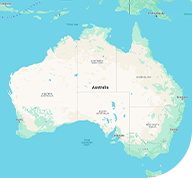Color-coded cleaning systems are vital for preventing cross-contamination. By assigning specific colors to tools for different areas like red for restrooms and blue for kitchens you minimize germ spread and enhance hygiene. This simple visual method ensures safety in workplaces like healthcare and food service.
Why is Colour-Coded Cleaning Important?

— Preventing Cross-Contamination
In the food processing industry, the risk of cross-contamination is a significant concern. Cross-contamination occurs when harmful bacteria or allergens are transferred from one surface to another, potentially leading to foodborne illnesses. Implementing hygiene best practices, such as colour-coded cleaning, helps mitigate this risk by clearly distinguishing which tools are to be used in specific areas, thus preventing the accidental spread of contaminants.
— Compliance with Regulations
Many regulatory bodies, including those overseeing food safety, recommend or require the use of colour-coded cleaning systems. Implementing such a system can help businesses comply with these regulations, avoiding potential fines and ensuring that their operations meet the highest standards of hygiene.
— Enhancing Efficiency and Safety
A well-implemented colour-coded cleaning system can also enhance operational efficiency. By reducing the risk of cross-contamination, businesses can avoid costly shutdowns and product recalls. Additionally, the colour-coding system is intuitive and easy to follow, simplifying staff training.
How to Start Implementing a Colour-Coded System

Assess your needs
The first step in implementing a colour-coded cleaning system is to assess your facility’s needs. Identify the different areas within your facility and determine the specific cleaning requirements for each. This assessment will help you decide how many colours you need and which areas each colour will represent.
Choose Your Colours
Once you have assessed your needs, the next step is to choose your colours. Commonly used colours include:
- Red: Toilets and bathrooms
- Blue: General areas, such as offices
- Green: Food preparation areas
- Yellow: Infectious areas or isolation zones
- White: Clinical areas
Ensure that the colours you choose are distinct and easily recognizable to avoid any confusion.
Train Your Staff
Training is crucial to the successful implementation of a colour-coded cleaning system. Ensure that all staff members understand the importance of the system and know which colours correspond to which areas. Regular training sessions and refresher courses can help reinforce these practices.
Monitor and Review
After implementing the system, it’s essential to monitor its effectiveness and make any necessary adjustments. Regular audits and feedback from staff can help identify any issues and ensure that the system is working as intended.
What’s the best colour-coded cleaning system?

At Executive Distributors, we understand the importance of maintaining a clean and safe environment in your business. That’s why we’ve developed the Micah DuraSan product line. It is a comprehensive colour-coded cleaning system designed to meet the highest standards of hygiene and efficiency while ensuring compliance with sanitation and health regulations.
- Durable and High-Quality Materials: Our cleaning tools are made from durable materials that can withstand rigorous use, ensuring long-lasting performance.
- Comprehensive Colour Range: The Micah DuraSan system includes various colours, allowing you to customize your cleaning protocol to suit your facility’s specific needs.
- Easy to Use: Our system is designed to be intuitive and easy to use, making it simple for your staff to adopt and follow.
- Compliance with Regulations: The Micah DuraSan system meets all relevant regulatory requirements, helping you stay compliant and avoid potential fines.
- Durable and High-Quality Materials: Our cleaning tools are made from durable materials that can withstand rigorous use, ensuring long-lasting performance.
Conclusion
Implementing a colour-coded cleaning system is a proactive step towards maintaining a clean and safe environment in your business. By preventing cross-contamination, complying with regulations, and enhancing operational efficiency, this system can provide significant benefits. The Micah DuraSan colour-coded cleaning system offers a comprehensive solution designed to meet your business’s hygiene needs. Invest in the Micah DuraSan products today and take the first step towards a cleaner, safer, and more efficient operation.
































